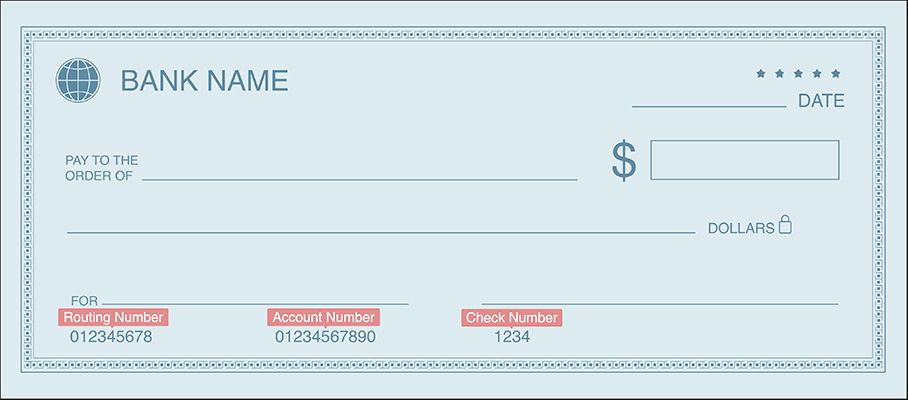In our increasingly interconnected world, money knows no borders. However, the complex web of global financial transactions needs a reliable system to keep things running smoothly. That’s where the SWIFT code steps in.
This globally recognized code, akin to an international passport for banks, ensures that your money gets to its correct destination when you’re involved in international transactions.

So whether you’re a globetrotter managing expenses across countries, an expat sending money back home, or a business dealing with international clients, being familiar with the SWIFT code is essential. Join us as we examine the SWIFT system and discover its importance in transferring money internationally.
Key Takeaways
- A SWIFT code is a unique identifier for banks and financial institutions, ensuring that international payments reach the correct destination by specifying the bank and branch involved in the transaction.
- The SWIFT code differs from an IBAN as it identifies the bank, whereas an IBAN specifies the account within that bank. Both codes are often needed for international transfers.
- If you mistakenly use an incorrect SWIFT code, your money might be sent to the wrong bank or account, so it’s crucial to double-check the details and contact your bank promptly to address any issues.
What is SWIFT?
SWIFT stands for Society for Worldwide Interbank Financial Telecommunication, a global member-owned cooperative headquartered in Belgium. Established in the 1970s to streamline and standardize financial transactions, it is now used by over 11,000 financial institutions worldwide for international money transfers.
How SWIFT Codes Facilitate Secure Global Transfers
A SWIFT code, sometimes known as a SWIFT BIC (Bank Identifier Code) or BIC code, is a standard format of Business Identifier Codes approved by the International Organization for Standardization (ISO). It’s a unique identification code for both financial and non-financial institutions. The term ‘SWIFT’ is often used interchangeably with ‘BIC’; thus, ‘SWIFT code’, ‘SWIFT BIC code’, ‘BIC code’, and ‘SWIFT ID’ essentially refer to the same thing.
A SWIFT code consists of 8–11 characters and contains information about the specific bank and branch where an account is held. The first four characters indicate the bank code, identifying the bank’s name.
The next two characters are the country code, representing the country where the bank’s head office is located. The following two characters are the location code, which can be numeric or alphabetic, and identifies the bank’s head office’s city. The final three characters, which are optional, are the branch code, identifying a specific branch of the bank.
For example, let’s say the SWIFT BIC code is ‘ABCDGB2LXXX’. Here, ‘ABCD’ is the bank code, ‘GB’ is the country code for Great Britain, ‘2L’ is the location code, and ‘XXX’ is the branch code.
Function of SWIFT Codes
The primary function of SWIFT codes is to enable international money transfers between banks efficiently and accurately. When you send money overseas, you’ll need a SWIFT BIC code to identify the recipient’s bank. This ensures that your funds are routed to the correct bank in the correct country.
In addition, SWIFT codes also assist in various other international financial transactions, including issuing Letters of Credit (LCs), payments for import/export purposes, and interbank transfers. They are also used in communication between banks and allow these institutions to exchange messages securely via the SWIFT network.
Where to Find SWIFT Codes
Finding the correct SWIFT code is imperative when making international transfers. You can find your bank’s SWIFT code by looking at your bank account statements or your online banking portal.
Alternatively, if you’re looking for another bank’s SWIFT code, you can use online SWIFT code databases or simply contact the specific bank directly. Just be sure to confirm the legitimacy of the SWIFT code you receive to avoid any hiccups during your transaction.
Using SWIFT Codes to Send Money Abroad
When you transfer money internationally using the SWIFT system, your bank will send a message via the SWIFT network to the recipient’s bank. This message will indicate the amount of money to be transferred and the account to be credited. The receiving bank then credits the account, and the money is transferred.
However, if the recipient’s bank does not have a direct relationship with your bank, intermediary banks might get involved, and additional fees may apply. Therefore, it’s essential to be aware of any potential charges related to SWIFT transfers.
Common Misconceptions about SWIFT Codes
Many people think that SWIFT codes are exclusive to banks, but they are used by various other financial institutions as well. Moreover, while SWIFT codes are vital for international transactions, they do not facilitate the actual transfer of funds but rather ensure that your money is sent to the correct institution.
SWIFT vs. IBAN
While both SWIFT and IBAN (International Bank Account Number) codes are used to transfer money internationally, they serve different purposes. The SWIFT code identifies a specific bank during an international transaction, while an IBAN identifies an individual account involved in the international transaction. In other words, while SWIFT codes ensure that the funds are sent to the correct bank, an IBAN ensures that the money goes to the correct bank account.
Alternatives to SWIFT for Sending or Receiving Money
While SWIFT is the standard for international wire transfers, other options may provide lower fees or faster transfer times. These alternatives include TransferWise, SEPA (Single Euro Payments Area), and various cryptocurrency solutions. However, each of these methods has its pros and cons, and the best method for transferring money will depend on your specific needs and circumstances.
Conclusion
Managing international banking transactions can be straightforward with the right knowledge. Understanding SWIFT codes and their role in global transactions enables you to be certain that your international payments are processed accurately and promptly. These unique identifiers for banks across the globe are essential for directing your money to the correct institution without delay.
By learning how SWIFT codes function, you can simplify the process of international finance, avoid common mistakes, and transfer funds across borders smoother. This knowledge not only improves the reliability and speed of your transactions but also offers confidence in your global financial engagements.
Frequently Asked Questions
What happens if I use the wrong SWIFT code?
If you use the wrong SWIFT code, your international money transfer might be sent to the wrong bank, causing delays. In the worst-case scenario, your money could end up in a completely different bank account. If you realize that you have used an incorrect SWIFT code, it’s important to contact your bank immediately to attempt to resolve the issue.
Are SWIFT codes the same for all branches of a bank?
Not necessarily. While the first four characters of a SWIFT code, the bank code, remain the same across all branches of a specific bank, the last three characters, the branch code, can vary. This branch code identifies the specific branch of a bank. However, not all banks have unique codes for each branch, and in such cases, a generic ‘XXX’ is used in place of the branch code.
Can I receive money internationally without a SWIFT code?
It largely depends on the country and the bank. Some countries, like those in the Eurozone, primarily use International Bank Account Numbers (IBAN) for international transfers. However, most banks and financial institutions worldwide use the SWIFT network for receiving international payments.
If your bank does not have a SWIFT code, it will likely partner with a bank that does have a SWIFT code (also known as a correspondent bank) to receive international payments.
Is the SWIFT code the same as the IBAN?
No, a SWIFT code and an IBAN serve different purposes in international transfers. A SWIFT code identifies the bank involved in the transaction, whereas an IBAN identifies the specific account within the bank. When processing international payments, you will usually need to provide both the SWIFT code and the IBAN.
Is it safe to give out my bank’s SWIFT code?
Yes, it’s safe to share your bank’s SWIFT code. It’s a public piece of information and used to identify your bank during international transactions. However, remember that other sensitive information like your bank account number should be kept confidential and only shared when necessary and with trusted entities.
What do I do if my bank does not have a SWIFT code?
If your bank doesn’t have a SWIFT code, it typically means that they’re using a partner bank to receive international payments. You should contact your bank’s customer service to understand the procedure for receiving international wire transfers. They can provide you with the partner bank’s SWIFT code and any additional information needed for the transfer.



